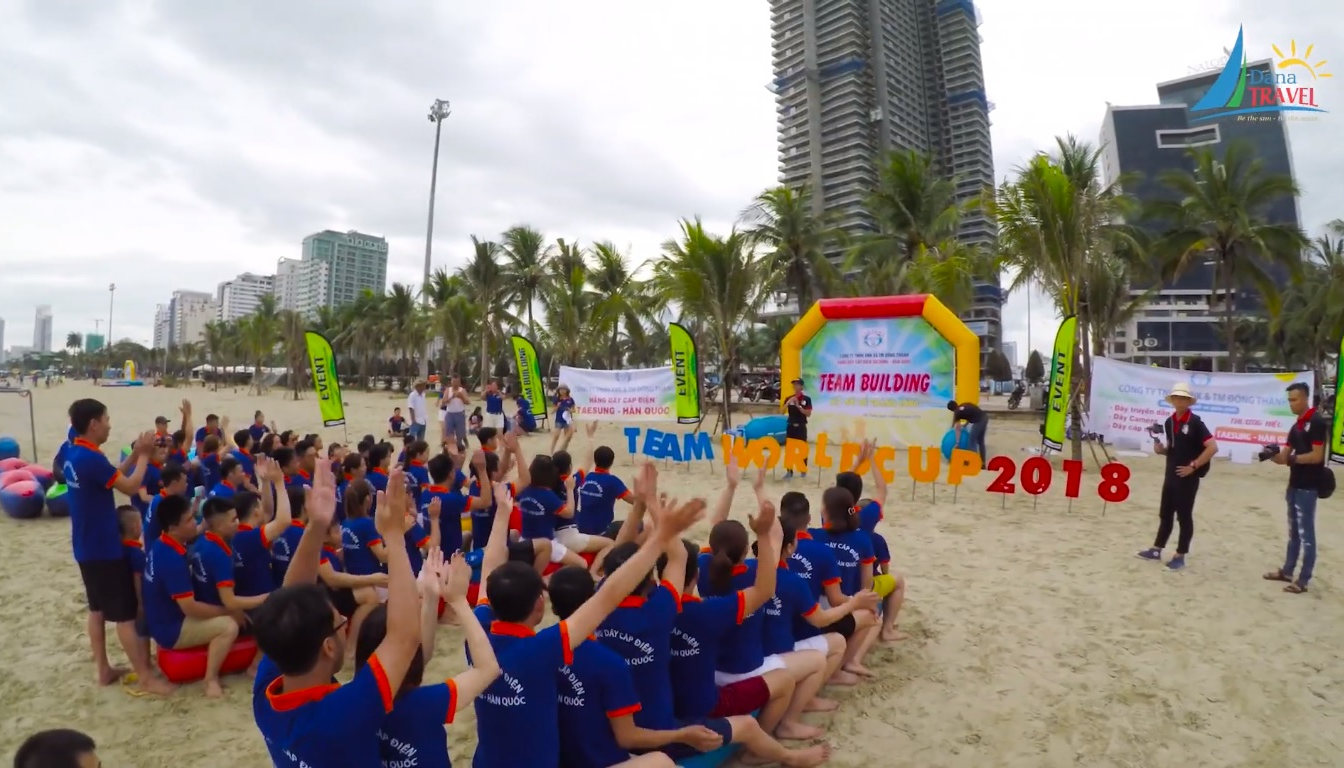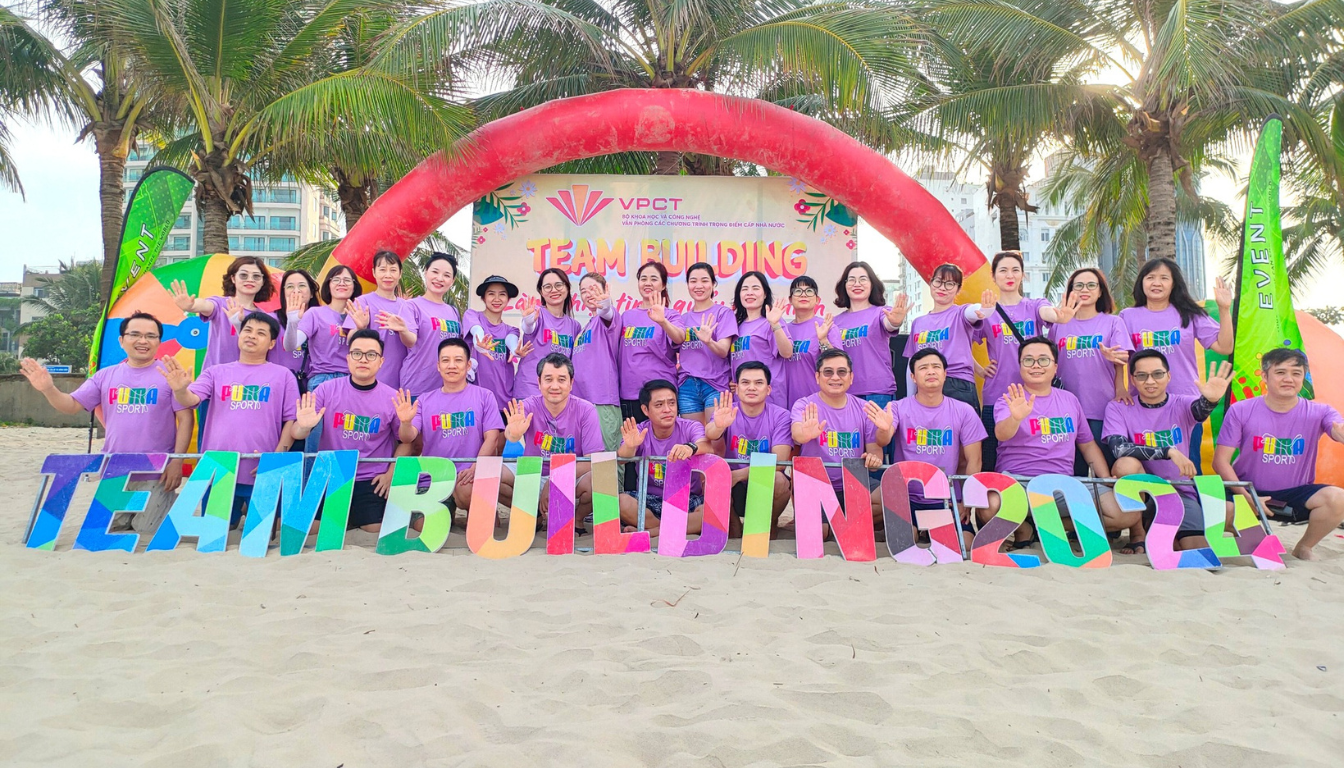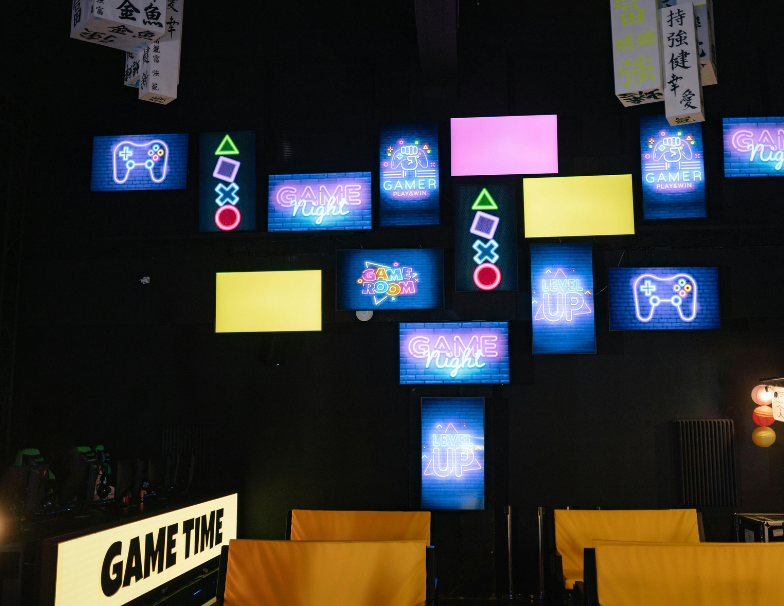What Are Icebreakers? Top Tips and Examples for Effective Team Building

Icebreakers are activities or questions that help people interact and feel more comfortable in a group setting. They are essential in meetings, workshops, and team building events to foster engagement and connection. Knowing what icebreakers are can help you create a more dynamic and productive environment.
Key Takeaways
- Icebreakers are essential for easing communication and fostering connections at the start of meetings, enhancing participant engagement and productivity.
- Incorporating icebreakers helps create a psychologically safe and inclusive environment, reducing anxiety and promoting open dialogue among participants.
- Various types of icebreakers can be tailored to specific meeting goals, dynamics, and settings, ensuring effective engagement, trust-building, and team bonding.
Understanding Icebreakers

Icebreakers are intentional activities or questions designed to ease communication, build connection, and energize participants. They serve as a catalyst for beginning meetings, getting to know new people, and supporting team building activities. At their core, ice breakers warm up a group, making everyone more comfortable and ready to engage.
The magic of icebreakers lies in their ability to energize participants, fostering a more attentive and active environment. Imagine starting a workshop where everyone is already animated and engaged—discussions become more fruitful, and collaboration feels more natural. In corporate settings, icebreakers are invaluable for facilitating workshops, events, and meetings, enhancing overall engagement and productivity.
These activities are more than just fun and games; they ease communication, build connections, and contribute to a positive group dynamic. Encouraging puzzle-solving and teamwork through icebreakers sets the tone for a collaborative and lively session. Whether you’re working with a large group of strangers or a tight-knit team, icebreakers can transform the atmosphere, turning a room of individuals into a cohesive unit.
Why Use Icebreakers?
So why should you incorporate icebreakers into your meetings or team building activities? The benefits are manifold. Icebreakers are effective in introducing participants, fostering engagement, and establishing the tone for any session. They build communication, reduce anxiety, and promote teamwork, making them a staple in any facilitator’s toolkit.
One of the most significant advantages of icebreakers is their ability to create a welcoming and relaxed environment. This makes interactions easier and more natural, setting the stage for meaningful connections and collaboration. Effective opening activities help energize the group and ensure that everyone is mentally present, ready to dive into the session’s objectives. Ice breaking activities can further enhance this process.
From building genuine connections to ensuring emotional well-being, icebreakers contribute to a positive and engaging atmosphere. They are not just for fun—they serve a strategic purpose in enhancing communication and fostering a spirit of teamwork. Now, let’s delve deeper into three specific benefits: creating psychological safety, promoting engagement and discussion, and building trust and personal connections.
Creating Psychological Safety
Icebreakers play a crucial role in establishing a comfortable environment, which encourages open communication among participants. Incorporating these activities at the beginning of a meeting can transform a tense or awkward atmosphere into a welcoming one, helping everyone feel at ease. Psychological safety is enhanced through icebreakers, promoting a sense of belonging and security within the group.
These activities are designed to break down barriers related to status, race, or gender, fostering a sense of unity among participants from diverse cultures. By including elements of fun, icebreakers help participants relax and open up, making it easier for everyone to communicate freely. When everyone has an equal chance to speak, it contributes to a more inclusive and engaging discussion.
Thought-provoking icebreaker questions can enhance empathy and understanding among team members, helping to build shared values and genuine relationships. Icebreakers break down social barriers and encourage open communication, creating a psychologically safe environment where everyone feels valued and heard, fostering emotional intelligence.
Promoting Engagement and Discussion
Starting a meeting with an icebreaker encourages presence, energizes the group, and clarifies meeting objectives. Participants are more likely to engage in discussions if they begin to speak during the initial moments of the meeting. If people don’t speak early, they are less likely to contribute later, leading to missed opportunities for collaboration.
Icebreakers like the Chat Waterfall evoke energy in virtual meetings and create shared moments of surprise. The Desert Island icebreaker encourages lively debates and discussions, promoting the sharing of different perspectives. These activities improve participant engagement by awakening senses and ensuring sustained involvement throughout the session.
When participants engage early, their likelihood of sustained engagement dramatically increases. Icebreakers help alleviate anxiety by clarifying the nature of the session, allowing participants to feel more comfortable. Questions that dig deeper can lead to more meaningful conversations and improve team dynamics. The use of icebreakers can lead to a more engaging and dynamic group discussion atmosphere.
Building Trust and Personal Connections
Positive social interactions facilitated by icebreakers significantly increase trust among group members. Fostering positive social interactions through icebreakers enhances trust and personal connections, creating closer bonds among participants. It’s important to involve all participants in these activities to foster inclusivity and enhance team dynamics.
Memorable icebreakers tend to leave a lasting impression on participants, enhancing group bonding. Small teams icebreakers, in particular, create opportunities for team bonding and deeper sharing, which are essential for building strong personal connections. When participants feel more connected, they are more likely to collaborate effectively and contribute to a positive team culture.
By encouraging participants to reveal personal information and share experiences, icebreakers help build rapport and trust within the group. This deeper understanding of each other fosters a sense of common ground and mutual respect, which are crucial aspects of effective teamwork and building relationships. It is important to recognize that these elements contribute significantly to the overall success of the group dynamics.
Types of Icebreakers

Icebreakers come in many different types, each designed to achieve specific goals and cater to different group dynamics. Whether you’re looking to quickly warm up a group, energize a team with fun activities, or engage remote teams, there’s an icebreaker for every occasion. Let’s explore the different categories and their unique benefits.
For instance, the ‘Just the facts’ icebreaker encourages quick sharing of factual information on a chosen topic, making it great for building knowledge among participants. The Interview Icebreaker facilitates interaction by having participants work in pairs to interview each other, fostering communication and connection. The Diversity Welcome icebreaker promotes an inclusive environment by inviting participants to express their unique traits.
Other examples include the Low-tech Social Network icebreaker, which visually maps connections among participants, and the ‘Have you ever?’ icebreaker, which helps the group see connections and share experiences in a low-pressure way. These activities are just the tip of the iceberg when it comes to the many different types of icebreakers available for various settings and objectives.
Quick Icebreakers for Tight Schedules
Quick icebreakers are designed to be straightforward, quick to execute, and can effectively warm up groups in a short amount of time. These activities are perfect for tight schedules, offering a simple yet effective way to break the ice without taking up too much time. Key characteristics of quick icebreakers include being simple to explain, fast to run, and effective in both large and small groups.
Examples of quick icebreakers include the Line-Up icebreaker, where players form a line based on criteria without discussing. The Name Game icebreaker helps participants learn each other’s names through a circle setup where everyone repeats names. The Weather Check-in icebreaker allows participants to share feelings using weather metaphors, making it a quick and relatable icebreaker.
These quick activities can serve as energizers to encourage participation following breaks or lunchtime. The ‘Just the facts’ icebreaker can be used before training sessions or in general with larger groups to prompt sharing relevant information. The Line-Up icebreaker, in particular, can promote non-verbal communication and teamwork, making it particularly effective at the beginning of training sessions and exercise. After a brief rest, participants can engage more fully in these activities.
Fun Icebreakers to Energize Teams
Fun icebreakers aim to create a lively atmosphere that encourages interaction and team bonding among participants. These activities are designed to be enjoyable and engaging, helping to energize teams and foster strong connections. The ‘Get to know you better’ icebreaker, for example, involves participants sharing statements on badges and mingling.
Other examples include the Bang icebreaker, which increases group energy and generates laughter. The Team Jigsaw Puzzle icebreaker encourages collaboration and communication among teams, while the Rock Paper Scissors Tournament energizes large groups and encourages engagement. The Diversity Bingo icebreaker is competitive and fun, enhancing team interaction.
Participants can also share experiences in the ‘Your Amazing Future’ icebreaker, focus on both one week and ten years ahead. The Object Meditation icebreaker helps participants notice feelings and leave behind those that don’t serve them. The Group Map icebreaker involves imagining a world map and sharing personal values based on birthplace, fostering a sense of common ground and connection.
These fun activities not only create a dynamic and enjoyable environment but also foster strong interaction and bonding among team members. The Back to Back Drawing icebreaker, for example, develops communication skills in a fun way, while the Lifeboat Debate activity engages participants in lively debates. The Apple, Orange and Banana icebreaker involves fun movements that enhance energy levels post-lunch.
Virtual Icebreakers for Remote Teams
Virtual icebreakers are designed specifically for online environments to help remote team members connect and keep engaged throughout the session. These icebreakers are essential in bridging the gap created by physical distance, ensuring that remote colleagues feel connected and engaged. One popular virtual icebreaker is the ‘Take a Picture of Your Shoes’ game, where participants share a photo of their shoes and discuss their choice.
Another engaging virtual activity is the Scavenger Hunt, which can be adapted for remote teams by using a virtual format. Participants are tasked with finding diverse items in their homes, adding a fun and interactive element to the meeting. The Desert Island game allows remote teams to discuss items they’d take if stranded on a desert island, fostering engagement and imaginative conversations.
The Chat Waterfall icebreaker prompts participants to answer a question simultaneously in the chat, creating dynamic interact and shared moments of surprise. Similarly, the Unique and Shared icebreaker promotes unity by encouraging participants to share something unique about themselves and something they have in common with others.
The Emoji Check-In icebreaker is fast and lighthearted, making it a perfect addition to virtual meetings. These activities help remote teams feel a stronger connection and foster a sense of community, which is crucial for effective team building in a virtual setting. Incorporating virtual activities ensures that remote colleagues remain engaged and connected despite the physical distance.
Effective Icebreaker Questions

Icebreaker questions are a powerful tool for revealing participants’ genuine selves and encouraging meaningful conversations. These questions help groups get to know each other and open meetings dynamically, setting a positive tone for the session. One effective method for kicking off a meeting with icebreaker questions is to ask a question to the group, give them 30-60 seconds to think, and then have a volunteer answer.
There are over 200 icebreaker questions available for easy implementation, ranging from light-hearted to thought-provoking. Breaking into pairs or small groups after the question can ease participants and allow everyone a chance to speak. In larger groups, participants can be invited to answer by raising their hand, ensuring that everyone has an opportunity to contribute.
Tailoring conversation questions to the group and using them based on the available time can have a profound effect on team cohesion over time. For example, the Paper Telephone icebreaker encourages creativity and laughter, fast-tracking the process of getting to know each other. Selecting and asking engaging icebreaker questions fosters an environment of open communication and strong work connections.
How to Choose the Right Icebreaker
Choosing the right icebreaker is crucial for setting the tone and ensuring the success of your session. Icebreakers should align with the meeting’s goals, reinforcing key messages and creating a positive atmosphere for discussions. For example, use short icebreakers for one-hour meetings and longer activities for full-day events to match the session’s duration.
The questions or activities chosen should be interesting and avoid clichés to keep participants engaged. Consider the group’s dynamics, the meeting’s purpose, and the desired outcome when selecting an icebreaker. By tailoring the icebreaker to the specific context and audience, you can ensure maximum engagement and effectiveness.
An effective way to choose the right icebreaker is to think about the intended purpose—whether it’s to energize the group, build trust, or encourage open communication. By aligning the icebreaker with these goals, you can create a session that is both enjoyable and productive.
Tips for Running Successful Icebreakers

Running successful icebreakers requires preparation and a positive atmosphere. Being well-prepared significantly enhances the effectiveness of an icebreaker session, ensuring everything runs smoothly. Clearly explaining the rules and timeframe of the icebreaker helps participants tailor their responses and understand what is expected of them.
Allocating specific time for the icebreaker is crucial for managing expectations and keeping the meeting on schedule. Encouraging everyone to participate, including other participants, fosters inclusivity and ensures no one feels overlooked during the activity. Maintaining a positive atmosphere throughout the icebreaker enhances participant engagement and connection, making the experience enjoyable for all.
Using engaging and enjoyable icebreaker questions encourages participants to share personal stories, further enhancing the bonding experience. Following these tips ensures that your icebreaker session is successful, memorable, and valuable.
Examples of Popular Icebreakers

Popular icebreakers are tried and tested activities that have been proven to foster engagement and build connections. For instance, the Quotes icebreaker involves participants discussing inspirational quotes in pairs, creating meaningful connections and typically lasting around 15 minutes. The Movie Pitch icebreaker is a fun and fast-paced activity. In this game, groups create and pitch an original movie idea to one another.
The Four Quadrants Activity is a creative icebreaker. Participants share four things about themselves through drawings, encouraging connections and discussions. The Break the Ice with Your Key activity involves participants presenting keys on their keychain and sharing related stories, fostering inclusivity. The LEGO Metaphors icebreaker uses LEGO bricks for creative expression and sharing among participants.
These examples showcase a range of icebreakers that cater to different group dynamics and objectives. From the Magic Box icebreaker, where participants pull an object from a box and share personal insights, to the Passions Tic Tac Toe activity, which involves participants filling a grid with personal passions, these activities are designed to create engaging and memorable experiences.
Incorporating popular icebreakers ensures a lively and connected group dynamic, fostering effective group development.
Two Truths and One Lie
The ‘Two Truths and One Lie’ game is a classic icebreaker designed to foster connections by encouraging participants to guess which statement is false. The facilitator starts by sharing three statements—two true and one false—and then asks the participants to guess which one is the lie. This game is typically played in small groups of 3-4, allowing for more intimate interactions and discussions.
This activity not only helps participants get to know each other better but also adds an element of fun and surprise to the meeting. Sharing personal and often surprising truths helps participants find common ground and build rapport, making it a powerful icebreaker for any event. Participants will also meet in a way that fosters connection, allowing each person to engage meaningfully.
The Marshmallow Challenge
The Marshmallow Challenge is designed for teams to collaboratively construct the tallest freestanding structure using a limited set of materials, including spaghetti and marshmallows. This fun activity encourages participants to work together towards a common goal, promoting teamwork and creative problem-solving.
During the game, two teams must strategize and communicate effectively to build their structure within a set timeframe. The collaborative nature of the Marshmallow Challenge enhances team building through shared experiences and creative collaboration, creating a dynamic learning environment with a shared goal for students. This activity is not only engaging but also serves as a metaphor for the importance of iteration and teamwork in achieving success through practice.
The Marshmallow Challenge is a great way to kick off a session, energize participants, and set the tone for collaborative efforts throughout the course of the team meeting. Incorporating this activity creates a dynamic and interactive environment that fosters teamwork and innovation.
Integrating Icebreakers into Your Agenda
Integrating icebreakers into your agenda is essential for enhancing engagement, creating interaction, and improving the overall effectiveness of your session. Effective icebreakers should be tailored to the specific audience and context of the meeting to ensure maximum engagement. Typically, icebreakers last between 2 to 5 minutes, making them a quick and efficient way to warm up the group without overwhelming the main agenda.
The duration of icebreakers can range from 5 to 20 minutes, depending on the group’s size and the nature of the activity. By strategically placing icebreakers at the beginning of the meeting, after breaks, or before intense discussions, you can keep the energy levels high and maintain participant engagement throughout the session.
To successfully integrate icebreakers into your agenda, consider the flow of the meeting and the objectives you aim to achieve. Whether it’s to energize the group, build trust, or encourage open communication, icebreakers can serve as powerful tools to enhance the overall experience and effectiveness of your meetings and events.
Summary
In conclusion, icebreakers are invaluable tools for fostering engagement, building trust, and promoting open communication in any group setting. From quick and simple activities to more elaborate and fun exercises, there is a wide range of icebreakers to suit different objectives and group dynamics. By understanding the benefits and types of icebreakers, and knowing how to choose and implement them effectively, you can create a dynamic and cohesive team environment.
Remember, the key to successful icebreakers lies in preparation, inclusivity, and alignment with your meeting’s goals. Companies like Offsite offer a range of services—from team-building activities and interactive workshops to curated dining experiences and wellness sessions. By incorporating these into your agenda, you can transform any meeting or event into an engaging and productive experience that leaves a lasting impact on all participants. So, go ahead and break the ice—your team will thank you for it.
FAQs
- What are icebreakers, and why are they important?
Icebreakers are activities or questions that facilitate communication and connection among participants. They are essential for creating a welcoming atmosphere, enhancing engagement, and building trust within teams.
- How do I choose the right icebreaker for my meeting?
Select an icebreaker that matches the meeting's objectives and the group's dynamics, opting for quick options in short meetings and more detailed activities for longer ones. Relevance and engagement are key to ensuring participants feel connected.
- Can icebreakers be effective in virtual meetings?
Yes, virtual icebreakers are effective in fostering connection and engagement among remote team members. Activities such as the Chat Waterfall, Scavenger Hunt, and Emoji Check-In facilitate interaction and camaraderie, enhancing the overall meeting experience.
- What are some examples of fun icebreakers to energize teams?
Engaging icebreakers like the Bang icebreaker, Team Jigsaw Puzzle, Rock Paper Scissors Tournament, and Diversity Bingo effectively energize teams and foster bonding. Incorporating such activities can enhance collaboration and create a lively environment.
You may also like
Unique spaces for your next offsite
Find distinctive venues for your upcoming corporate retreat.
Stay Updated with Our Insights
Get exclusive content and valuable updates directly to you.







